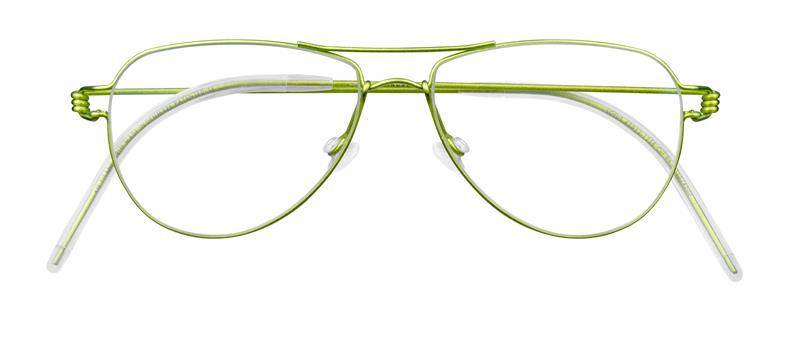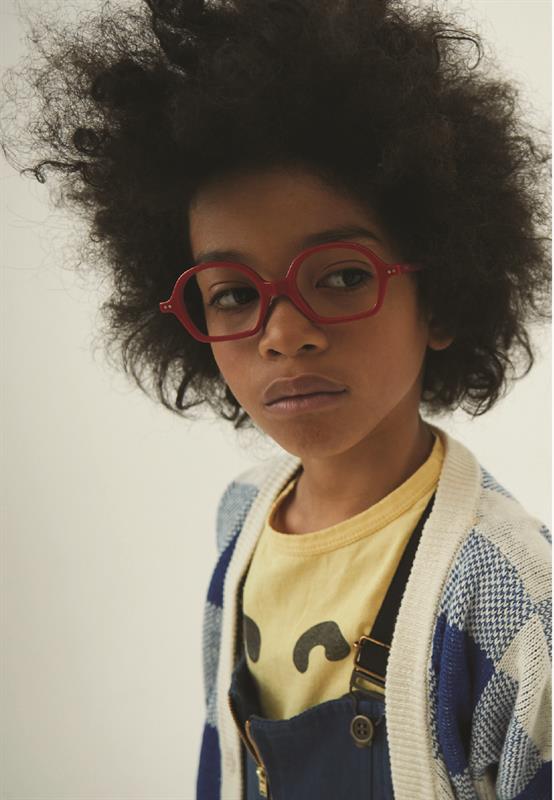
While an obvious truism, the notion that children are the future certainly resonates with optical practices. The big spending fashion frame connoisseurs, the sports eyewear obsessives and the minimalist wearers of tomorrow are only going to come from one place. There is a potential lifelong customer at stake if you can get those formative years dispenses spot on. So here Optician speaks with frame designers about the challenges of designing eyewear for children and some of the lesser known nuances of children’s eyewear that can make a difference in practice.
International Eyewear.
Mike Hale: What are the specific design challenges associated with children’s eyewear?
Rosemary Morton, head of product at International Eyewear: Childhood is a formative time for children’s eyes. It is an opportunity to correct and stabilise vision and eyewear plays a big role in enabling the prescription to be most beneficial. It is a challenge to design eyewear that correctly positions the lens and an even harder one to ensure the frame stays put. We have a big focus on the relationship between the bridge and plug placement in children’s designs, endeavouring to make dispensing easier for our customers.
We are also mindful that our children’s designs need to be more than just functional. There is a longstanding stigma associated with wearing glasses particularly amongst children, our job as designers is to overcome any reluctance by designing desirable styles. We want children to love their glasses so that they are happy and proud to wear them.’
MH: Is it best to make frames that appeal to children or their parents?
RM: In most cases both children and adults have a part in the frame choosing and buying process, children are likely to gravitate towards colour and brand whereas the parent will look to the brand, style and price. We try to consider both audiences where possible as our most successful styles appeal to both. Our Roald Dahl eyewear collection is a perfect range to demonstrate this, as the designs provide nostalgia for parents who loved the stories and characters when they were younger whilst also appealing to children who are engaging with the stories now.
MH: What sort of frame designs do children of various ages value?
RM: We find that the main draw for young children is colour. Shortly followed by characters and patterns, which children can easily engage with and relate to. The style and shape becomes a bigger factor as children get older.
MH: What are the considerations in producing eyewear based on the iconic characters of children’s author Roald Dahl?
RM: Our main priority when designing the Roald Dahl eyewear collection is to ensure that the styles stay true to the identity of the characters and stories featured. We use innovative techniques to celebrate the Roald Dahl brand, whilst ensuring that the collection is wearable and diverse. We aim to create individual eyewear designs that can give children the confidence to be themselves.
MH: How can stocking the right frames for children help optical practices?
RM: There are various ways that stocking the right children’s frames can help optical practices. The frequency of visits from children can increase the sales opportunity to their guardians. Children’s eyewear brands often offer playful point of sale material, which can be used to create an engaging window display or brighten up an area of a practice. But most importantly capturing and securing customers as children is the way to ensure a future customer base.
Lindberg
MH: What are the key challenges when designing children’s frames?
Charlotte Warming, designer at Lindberg: One of the key challenges we meet when designing glasses for children is that a child’s face is very delicate. In our opinion eyewear should not dominate the beauty of a child’s face. Due to this our children’s frames are very minimalistic, although it is possible to add acetate inner rims for a more visible look in some cases. Another reason why we find it important to keep the frame minimalistic is physiological in nature. It is important that a child is able to maintain eye contact with an adult and that means looking up at an angle most of the time, which would be more difficult with a heavy frame.
It is of utmost importance that the frame can actually be adjusted. Having the right temple length, being able to bend the material and having the right nose pads for the child is very important. Bear in mind that a child has almost no nose bone.
MH: What do older children want from eyewear?
CW: Children want to be cool, so to make eyewear that is visible to the tween and teen is a challenge we love. In regards to design, it is also important to know that you cannot just take an adult frame and size-down as the proportions are quite different. It requires a great deal of know-how to design children’s eyewear that fits properly.
 Sofus from the Lindberg Kid Collection
Sofus from the Lindberg Kid Collection
MH: What should an optical practice aim for when stocking childrens glasses?
CW: We find that it is the optician’s foremost duty to help children get eyewear that gives them a great everyday experience with no discomfort and still feeling on top of the world.
Zoobug (GLBL Eyewear Group)
MH: What age ranges is it useful to utilise when designing children’s eyewear?
Jonathan Van Blerk, ceo of the GLBL Eyewear Group: Since taking over the Zoobug brand, we find it useful to consider two to six years and four to 10. Obviously there’s a lot of overlap and children develop at different rates.
MH: Can you take me through the design process behind a pair of Zoobug frames?
JVB: It’s quite simple. Children have incredibly different head sizes and head shapes compared to adults. Not only is the head, compared to the rest of the body, a lot larger at the age groups we are talking about, but children also have a very different nose bridges. Their nose, which hasn’t really developed, is much flatter so you have to have a much more open angle on the bridge.
Then you’ve got to look at the age group and assess its needs. So you’re either looking at how you use a typical nose pad to position and sit properly where it contacts the bridge. Or you’ve got to look at how you change your shapes. And that’s really the crux of it. We spend a lot of time changing shapes and things like that, so that it doesn’t sit on cheeks, so that it doesn’t lift, so that it actually rests lightly on the bridge, and sits in the position. So really it’s catering to children’s head needs. So head size, temple length, bridge needs, and then how it sits on the front of the face.
 Viola from Zoobug’s Summer 2021 collection
Viola from Zoobug’s Summer 2021 collection
MH: What materials do you prefer to work with for children’s frames?
JVB: We very rarely use metals unless we’re going for a concept – with nose pads and things like that. For the youngest children we generally use rubber because it’s very resilient, quite soft to the touch, adaptable, and pliable so it won’t break.
Then for the next age group – we’re talking from around four to 10 – acetate is a very comfortable material that shapes to the face. Unlike other brands, we are not injecting the acetate. Generally, a lot of product these days is core injected – meaning they slide a wire cord in and then inject around it. But this means the end product doesn’t really have the real properties of acetate. It doesn’t have the comfort and it doesn’t have the fit and finish of it.
MH: What do children in the UK want from frames in terms of shape and colour?
JVB: In the UK, fewer kids want to have loud shapes or loud colors. They want to fit in a little bit more, so we try and walk a very fine line in between adding color and a bit of creativity. •
